Time card approval is the process where a manager or supervisor verifies an employee’s time card information for accurate payroll processing.
Depending on your company’s needs, time cards can be approved daily, weekly, or monthly.
But the real question is: how do you go about timecard approval?
In this article, we’ll dive into the time card approval process and understand why you need to automate it. We’ll then highlight six useful tools and provide two simple tips for effectively managing the timecard approval process.
Table of Contents
- What is time card approval and how does it work?
- Why you should automate time card approval
- Top 6 tools for easy time card approval
- 2 smart tips for managing time card approval process
Let’s go.
Looking for a time card template?
Here are some free Google Sheet templates you can use today.
What is time card approval and how does it work?
A timecard or an employee timesheet is a log of work hours that employees update every day when they clock in and clock out.
It may also include which tasks they did and how long they worked on each task.
An employee’s time card displays the number of hours they worked. When it is completed, it’s submitted to a manager or supervisor for approval.
The manager or supervisor then checks those time entries and confirms the employees’ pay based on the agreed rate and time worked. At this time, the employer also factors in bonuses, overtime pay, and penalties.
Traditionally, employees check a time card into a time clock that stamps their start time and the time they leave work. Admin staff then collects all of the time cards to process them and mark their approval status as approved or rejected.
With automated time card approval, this process is streamlined with time card software.
When employees clock in and track their time, the information is sent directly to a manager, who can get in-depth information on their productivity.
Let’s take a closer look at the benefits of using time card software.
Why you should automate time card approval
Let’s take a look at three common benefits of automating the timecard approval process:
1. Generate accurate payroll
The traditional timecard approval process is prone to calculation errors and time theft. These errors can lead to either overpayments or underpayments.
While overpaying can cause significant losses, underpaying can leave employees disgruntled and impact productivity.
Fortunately, you can automate processing with timecard approval apps to eliminate factors like human error — resulting in accurate payroll.
2. Save time & increase productivity
The time taken to fill, verify and approve a timecard can take away valuable time and human resources from employees and managers – which otherwise they could’ve spent on critical tasks.
Modern timecard approval software automates these admin tasks.
Not only does this make the process streamlined, but features such as reports offer added insight into employee productivity. And if needed, you can take corrective measures to boost it.
3. Maintain proper records
A good and ethical business always thrives on keeping the ledgers up to date. That’s why you need to maintain a standard bookkeeping practice.
However, unintentional inputs, lost paperwork, and mistakes can land a business in hot water with their respective tax collecting authority.
A business can be assured of a well-kept accounting department when the timesheet is accurate with the help of a timecard approval software.
Now that we understand why automating timecard approval is essential, the only question is: which is the best tool for your needs?
Let’s find out.
Top 6 tools for easy time card approval
We’ll look at six of the best timecard approval tools along with their key features, pricing, and user ratings:
1. Time Doctor

Time Doctor is a powerful employee time tracking and performance management tool used by major companies, like Verizon and Ericsson, and small businesses, like Thrive Market, to boost productivity across the board.
Time Doctor makes employee time tracking and timesheet approval a piece of cake.
How?
All you need to do is use its advanced time tracking functionality.
Time Doctor automatically converts the tracked data into time card entries and comprehensive reports for accurate payroll management.
Key features
Here’s a detailed look at some of Time Doctor’s features:
A. Time tracking
Time Doctor’s time tracking feature supports both manual and automatic tracking.
In manual time tracking or the Interactive mode, an employee just has to:
- Create a task they would like to track.
- Add it to a project.
- Press play to track time.
- Press stop to pause or stop tracking time.
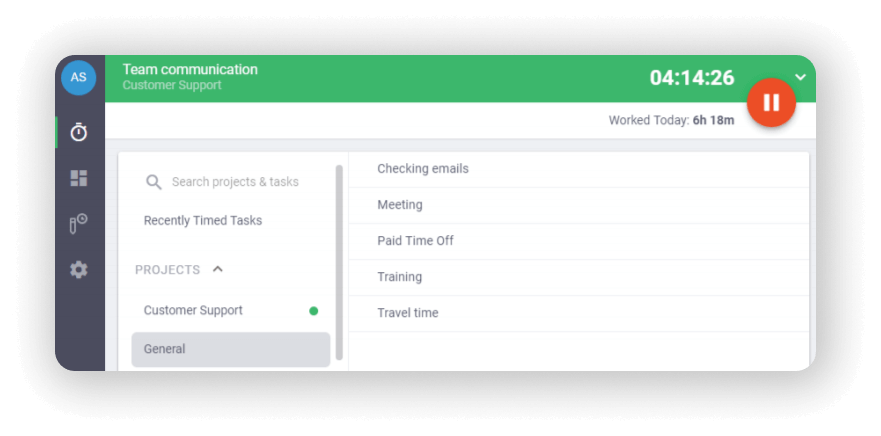
Time Doctor also offers a silent version for automatic time tracking that starts tracking time when an employee starts their PC.
It has little impact on employees’ everyday routines and lets them continue to work normally while also providing companies with data on their productivity to improve their performance.
Note: Time Doctor prioritizes employee privacy and doesn’t have any keylogging functionality.
B. Work schedules
Time Doctor’s work schedules feature helps managers create shifts for each employee.
To create an employee schedule in Time Doctor, simply:
- Export as a CSV file with all the users and a date range.
- Add all the relevant information like employee name, email, ID, unique identifiers, and a date range.
- Import the CSV file back into the system, and the schedule will be loaded.
How do you edit a schedule?
Follow that same process mentioned above, make your changes, and then import back to the system.
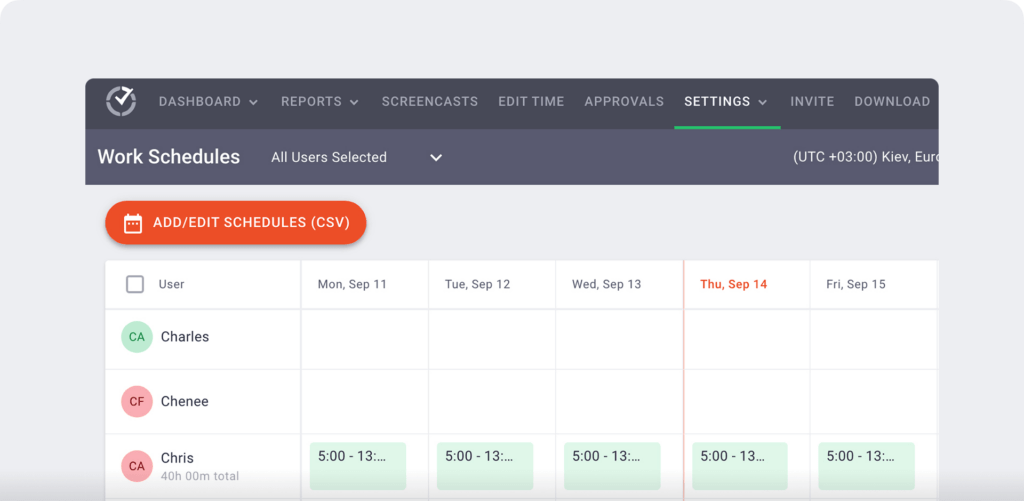
C. Reports
Time Doctor generates different reports that offer valuable insights into how employees spend their time.
Let’s take a look at these comprehensive reports:
- Attendance report: Displays employee’s current status such as present, absent, late, or partially late.
- Hours tracked report: Indicates total hours an employee logged for any specific date range.
- Web and app usage report: Gives insight into your employees’ sites and apps usage during working hours.
- Custom export report: Allows you to export reports with all the necessary data you need in a single report.
- Timeline report: Shows when an employee was working and on break.
- Projects and tasks report: Displays how long they spent on a specific project.
- Activity summary report: Shows the active minutes, unproductive, and mobile time for a specific date range.
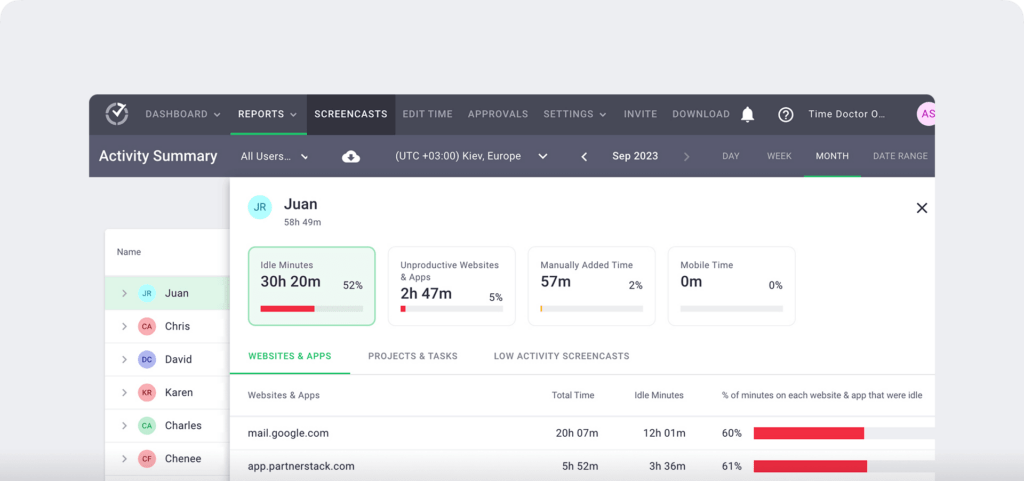
D. Payroll management
Managing payroll becomes easier with Time Doctor’s payroll feature.
Here’s how you can configure payroll in the Company Settings:
- Click the payroll button under the Configuration.
- Add your payment methods, including Paypal, Wise, Gusto, and ADP.
- Select all the users you would like to pay.
- Choose a pay period for those users.
- Select the appropriate currency for each user.
- Add in each user’s pay rate.
- Confirm the payment method for each user.
You can then export the payroll as a CSV file and upload it to the appropriate payment method for batch payments.
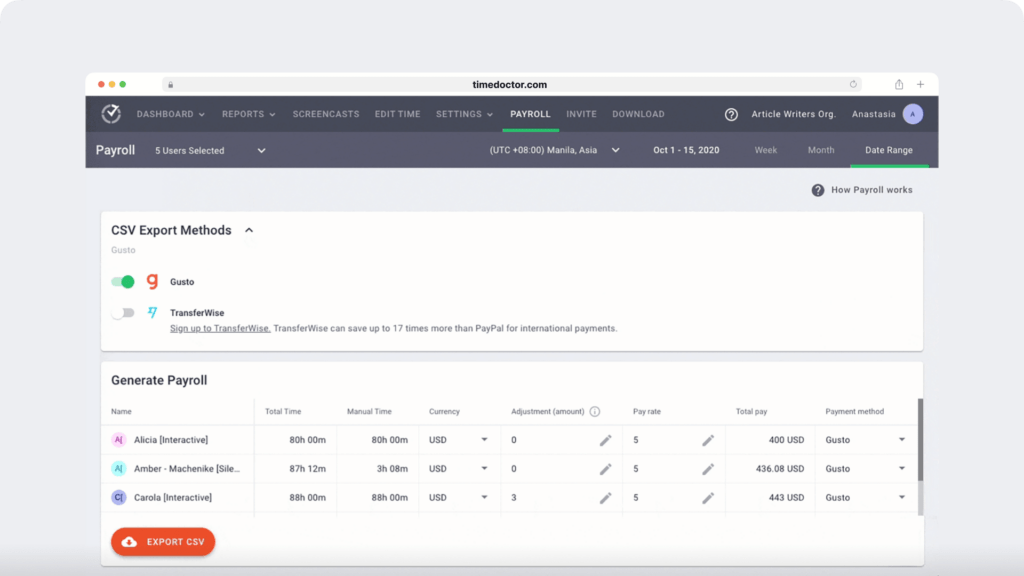
E. Productivity ratings
Productivity ratings allow managers to mark websites and apps based on their relevance to work.
You can mark them as:
- Productive.
- Unproductive.
- Neutral.
- Unrated.
For example, you can rate social media sites like Facebook as ‘unproductive’ and business tools like Microsoft Excel as ‘productive.’
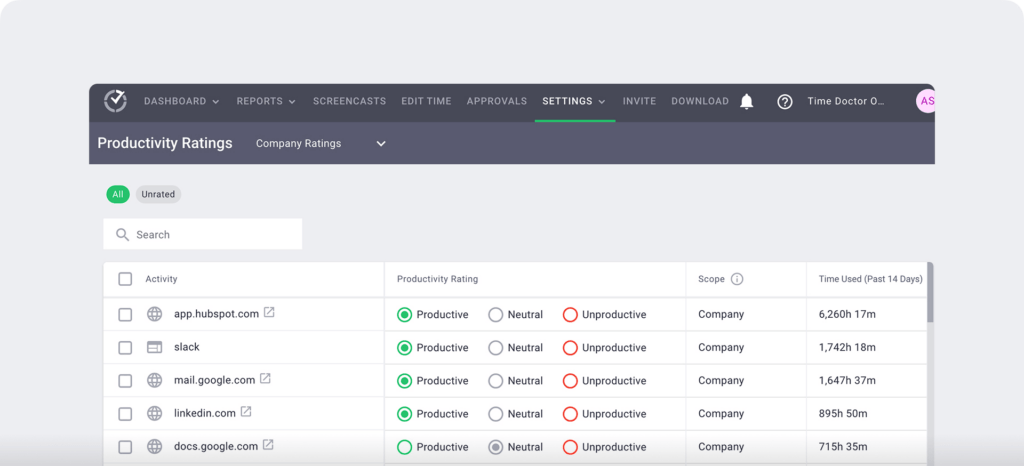
Pricing
Time Doctor’s plans start as low as $7/month. A 14-day free trial is also available (no credit card required).
User ratings
- G2: 4.4/5 (250+ reviews)
- Capterra: 4.5/5 (380+ reviews)
2. ADP Workforce Now
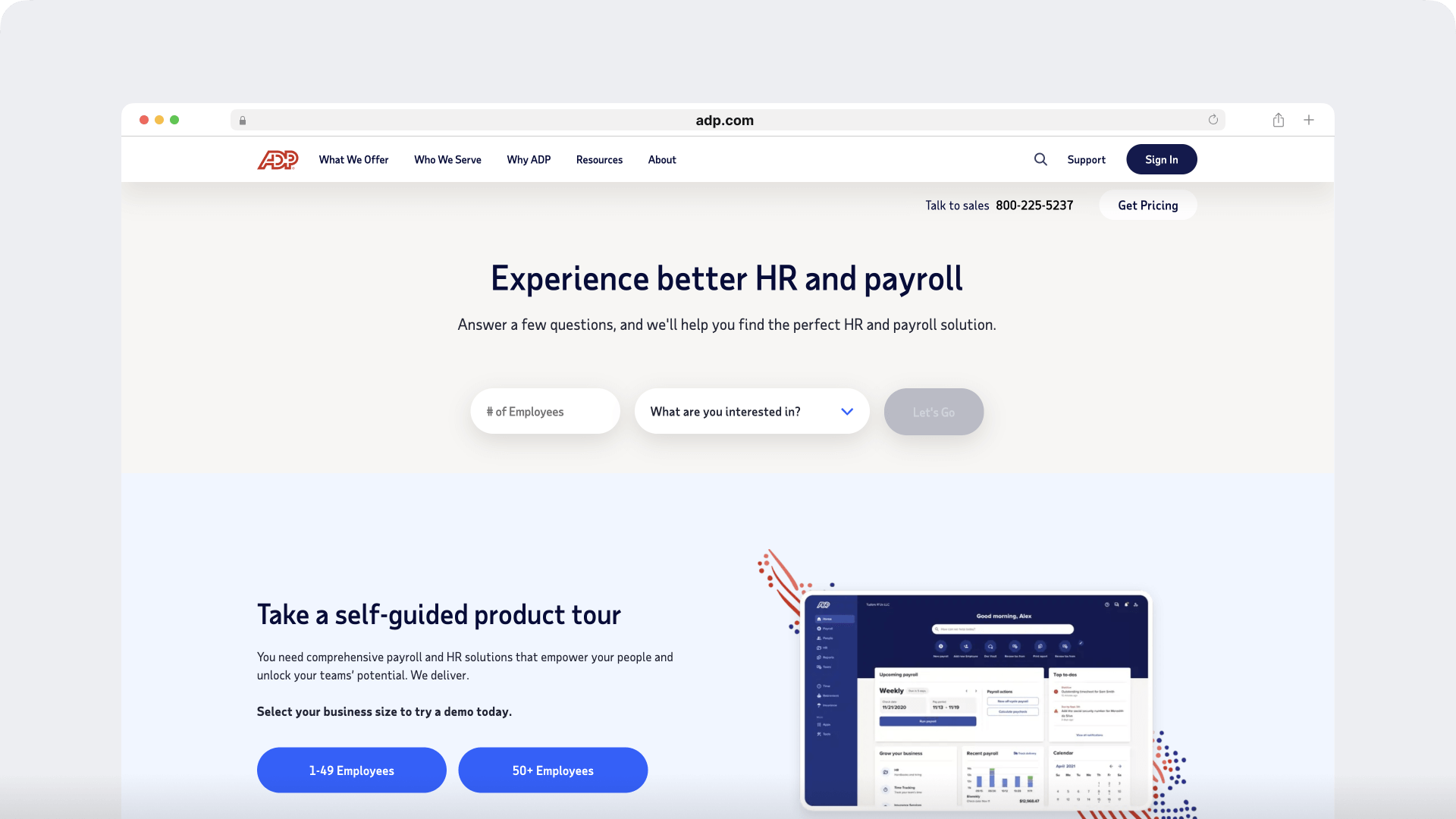
ADP Workforce Now is a work management software that offers time tracking, attendance management, and payroll integration.
To approve time cards, in the upper right-hand corner of the time card, click the “Employee Approval Required” link, review the information, add supplementary earnings if applicable, and simply click approve.
Key features
- Time tracking to capture employee hours and generate payroll.
- Automated schedules for efficient employee scheduling.
- Alerts remind managers to follow specific rules, calculate overtime, and approve time cards.
- PTO management capabilities to plan and manage days off better.
- Detailed reports to help you make data-driven decisions easily.
Pricing
Contact sales to get a custom quote.
User ratings
- G2: 4.1/5 (3000+ reviews)
- Capterra: 4.4/5 (5300+ reviews)
3. WorkforceHub
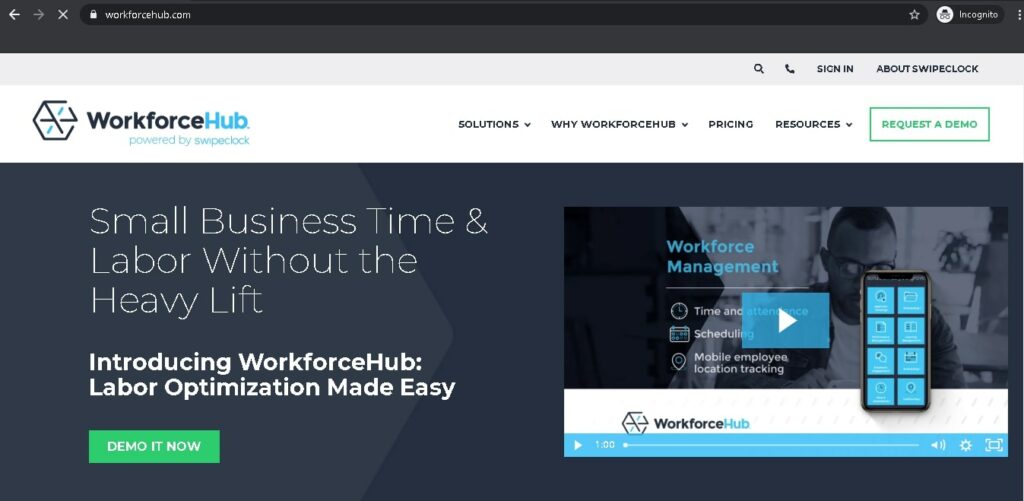
WorkforceHub is a timecard approval app suitable for small teams and businesses.
All an employee has to do is fill in their timecard, lock in their total hours, and export them. Managers can then review the card and simply click approve or reject.
Key features
- Offers PTO management to stay updated with employee leave days.
- Geofencing allows managers to know when employees are on-site.
- Reminds employees to clock in according to their schedule.
- Push notifications in real-time for quick time-off request resolution.
- Scheduling helps employees pick up shifts available to them.
Pricing
Pricing plans for WorkforceHub start at $4/employee per month.
User ratings
- G2: 4.1/5 (10+ reviews)
- Capterra: 4.5/5 (20+ reviews)
4. Buddy Punch
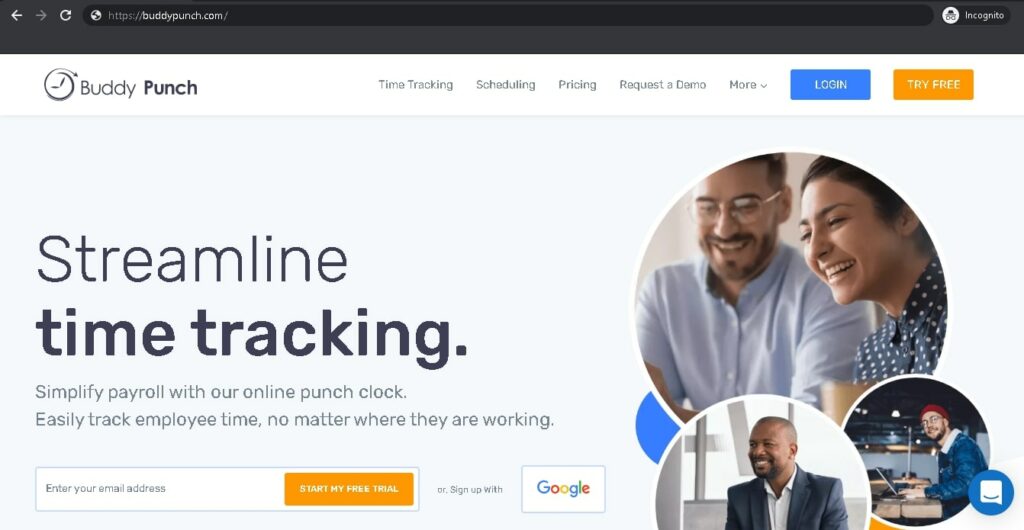
Buddy Punch is a time tracking and attendance app designed for businesses of all sizes. It supports flexible punch-in options like QR codes and facial recognition.
Key features
Decide the employee approval status with one click of the approve button. - Biometric recognition to prevent time theft.
- Comment section within the digital time card to jot down important notes.
- PTO management for simple shift scheduling and leave management.
- Geofencing allows for area-specific punch-in.
Pricing
Paid plans start at $29.99 for up to four employees.
User ratings
- G2: 4.8/5 (105+ reviews)
- Capterra: 4.8/5 (648+ reviews)
5. Payroll Partners
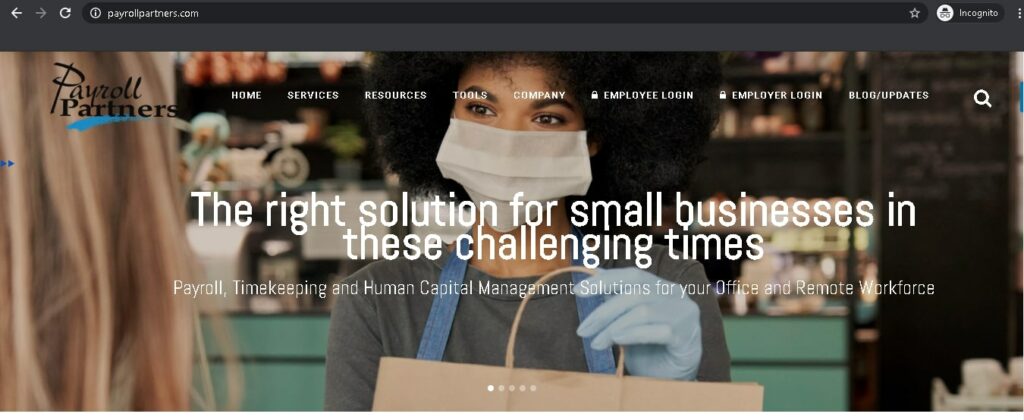
Payroll Partners offer timekeeping and attendance solutions for small and medium-sized companies. They also specialize in payroll management.
Key features
- Manage clock-ins through biometrics, pin code, and badge swipe.
- Copy-paste, drag, and drop capabilities for user-friendly shift management.
- Managers and employees can approve a timecard from the mobile app.
- Customizable payroll processing and tax filing functionalities.
- GPS tracking records user location at the time of clock-in.
Pricing
Contact sales to get a custom pricing quote.
User ratings
- G2: N/A
- Capterra: N/A
6. ExakTime
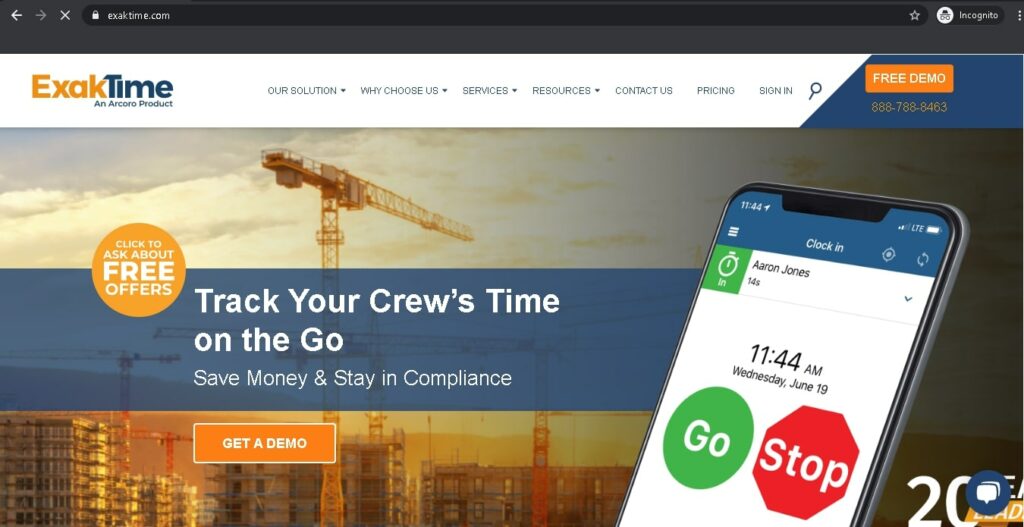
ExakTime is a time tracking app that helps construction companies manage their on-site field teams. They use signature capture as the method to approve timesheets.
Key features
- Offers a mobile app for simple clock-in and out.
- Workers can submit field updates through the app as pictures.
- GPS tracking allows the project manager to manage their field teams.
- Approver can include exceptions (incomplete time entries or unresolved information) before approval.
- Forms to add information about breaks and injuries.
Pricing
Plans start at $8/user per month.
User ratings
- G2: 4/5 (10+ reviews)
- Capterra: N/A
Now that we have explored some of the best time card approval apps available today, let’s see how you can manage the process with ease.
2 smart tips for managing time card approval process
Here are two tips to help you further streamline the timecard approval process:
1. Centralize all information
Consolidating all information like time entries, overtime data, and other relevant reports onto one hub or dashboard can save the manager or approver time. They won’t have to juggle between multiple tools to access various data they need during the card approval process.
This means that you may only require one administrator to control and approve multiple timecards from a centralized hub.
Moreover, not only can your managers approve time cards in minutes, they can do it from anywhere and anytime they want.
Additionally, managers easily compare reports of all their employees during performance reviews. They can then step in to help an employee who is struggling.
2. Set up work schedules
Assigning employee schedules provides two benefits: increased accuracy and reduced errors.
For example, let’s say an employee checks in and out at irregular hours, or worse, they forget to clock out. If this continues over time and no one flags it, it can result in high over-time charges and also employee burnout.
So, by enforcing shifts, all you have to do is compare the tracked hours against the assigned schedule to generate the payroll. This makes the approval process easier to handle, resulting in less wasted time and more money saved.
Final thoughts
Whether you’re a small business or a corporation, employee timecard approval is an essential process. It helps generate accurate payroll and client invoices.
Go through the tools mentioned above and pick the one that best suits your needs to streamline the process.
Clearly, Time Doctor stands out with its advanced features like time tracking, payroll management, schedules — making the timecard approval effortless.
So why not sign up for Time Doctor’s 14-day free trial today to make timecard management a cakewalk?

Liam Martin is a serial entrepreneur, co-founder of Time Doctor, Staff.com, and the Running Remote Conference, and author of the Wall Street Journal bestseller, “Running Remote.” He advocates for remote work and helps businesses optimize their remote teams.


